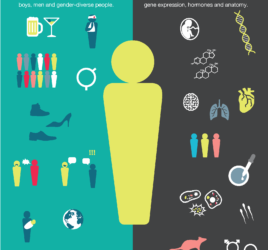
Empowering Children with Autism at School – the role of vocabulary skills
Early in the morning on each school day, a mother of a kid with autism feels a mix of emotions as she sends their little one to school. Every day brings worries, like the fear of bullying or uncertainty if their child keeps up with lessons.
This scenario represents the silent struggle etched on the faces of many parents of autistic kids, a struggle that is not unfamiliar to many. But amidst these concerns, a positive transformation is taking place worldwide, offering hope and promise for families like theirs. There has been a global shift in recent years towards inclusivity, with several countries such as Australia, Finland, and the Netherlands enacting national regulations allowing children with developmental disabilities to attend regular schools. This change is not merely administrative; it represents a profound shift toward creating an environment where every child, regardless of neurodiversity, can thrive academically and socially.
Autism is a neurodevelopmental condition characterized by challenges in social interaction, communication, and repetitive behaviors [1]. It is a spectrum with a wide range of strengths and difficulties rather than a single, set condition [2]. Often, children with autism encounter challenges in the school setting, which may involve heightened sensitivities to sensory stimuli such as lights and sounds, difficulties with understanding their teacher’s instructions, and/or difficulties with engaging in group activities. Children diagnosed with autism display a diverse range of specific skills and interests. Some examples include specific skills in painting, playing piano, or interests in certain subjects such as pets, soap series, planets, horses or dinosaurs.
Digging deeper into the challenges faced by children with autism in a regular school, my recently published study [3] has shown a fascinating link between vocabulary skills and school performance. We studied children with and without autism in the Netherlands (N = 2038 who were enrolled in regular schools, all IQs were above 70). All participating schools and teachers had received the necessary training and preparation to accept and assist children with autism. We collected measures of children’s vocabulary skills when they were 7 years old by using a language test called TvK (Taaltest voor Kinderen) [4]. The children were required to select the correct answer from two images that correspond to a given word. Our study showed that these vocabulary skills predict language and mathematics test scores at 11 years old measured by a standardized school achievement test of the Central Institute for Test Development (CITO). Thus, it appears that learning more words may contribute to enhancing comprehension of teacher’s instructions and exam’s questions, potentially leading to a better test scores.
Let me explain this with an example from real life:
Meet Alex, 10 years old, an autistic child with a keen interest in science. Even though he finds it a bit tricky to talk to others, he knows a lot of big words related to science. When the class learns about planets and space, Alex understands the difficult words easily. He can talk about space in a smart way and ask good questions.
Because Alex knows these words well, he can read science books that are a bit harder, and he learns more than what the class is studying. This makes him do really well in science. So, having a lot of good words helps him not just in science but also in doing great in school overall. The teacher sees this and helps Alex learn even more words. This shows how knowing many words can make school more interesting and help kids like Alex do really well.
In my study [3], we meticulously compared children with autism with their typical peers using a specific statistical method called propensity score matching (PSM) [5]. The advantage of this statistical matching method is that it selects the matched typical peers based on various background characteristics that often differ in case-control designs. Some included background characteristics are gestational age, child sex, birth weight, child age, ethnicity, income, education, mother’s IQ, mother’s autistic traits, and mother’s depression score. The matching process took into account these background variables, ensuring a fair and comprehensive comparison. Using this PSM technique, the matched typical peers therefore are assumed to have similar background characteristics as the children with autism. We then compared the CITO scores between the autistic children and their matched typical peers. The results indicated that their CITO scores were similar. This finding may suggest that any observed differences in school performances between children with autism and their typical peers could be attributed to factors such as verbal skills.
The aforementioned study demonstrated that given the right support and training, children with autism have the potential to achieve the same level of school performance as their matched typical peers. Most importantly, there is a lot of space for development and improvement for every child with autism, particularly regarding their verbal skills. This is empowering knowledge for children with autism, their teachers and their parents. It is a reassuring truth for parents of children with autism: there is no need for the morning worries as they send their little ones to school.
Further reading and information
For parents thinking about enrolling their autistic child in a regular school, these links to different schools in the Netherlands may be helpful:
https://iederin.nl/
https://wij-leren.nl/autisme-in-de-klas-tips-lk-lln.php
https://wij-leren.nl/taal-tips-thuisonderwijs.php
Some schools in the Netherlands use gamification techniques in which children can practice their vocabularies at home. It is advised that parents let their children use that resource to expand their vocabulary, for example:
https://www.zwijsen.nl/in/zoem-de-bij/
https://jufbijtje.nl/lesmateriaal/veilig-leren-lezen/veilig-en-vlot/
References
1. Keen, D., Webster, A., & Ridley, G. (2016). How well are children with autism spectrum disorder doing academically at school? An overview of the literature. Autism, 20(3), 276-294.
2. Waltz, M. (2014). Worlds of autism: Across the spectrum of neurological difference.
3. Sari, N. P., Luijk, M. P., Jansen, P. W., Prinzie, P., & van IJzendoorn, M. (2023). Academic achievement of children with autistic symptoms compared to typically developing children. European Journal of Psychology of Education, 1-25.
4. van Bon, W. H. J. (1982). Taaltest Voor Kinderen. Swets & Zeitlinger.
5. Harder, V. S., Stuart, E. A., & Anthony, J. C. (2010). Propensity score techniques and the assessment of measured covariate balance to test causal associations in psychological research. Psychological methods, 15(3), 234.
Picture credits
Featured image from Flickr by Sharyn Morrow; all creative commons license Attribution-NonCommercial-NoDerivs (CC BY-NC-ND 2.0).
Author picture taken by Dr. Yvonne Groen



